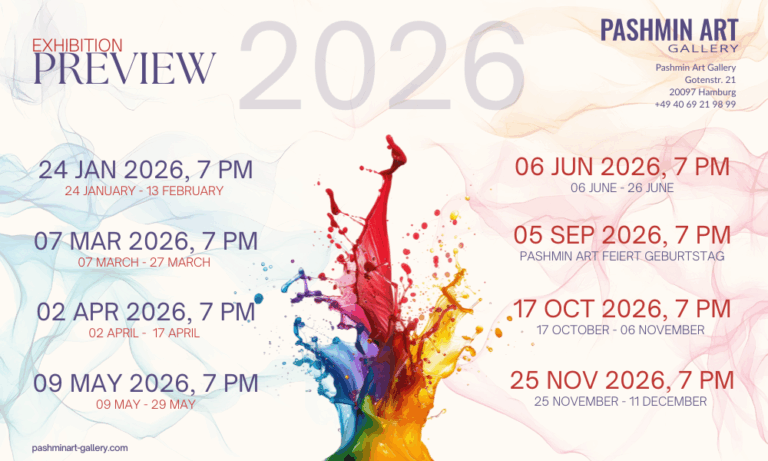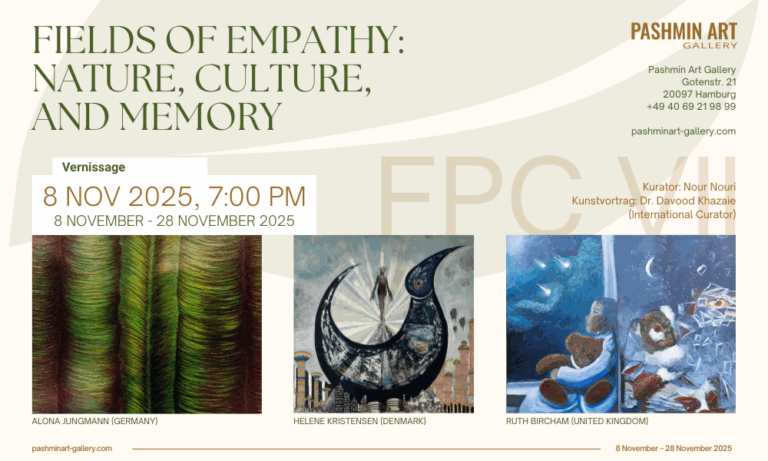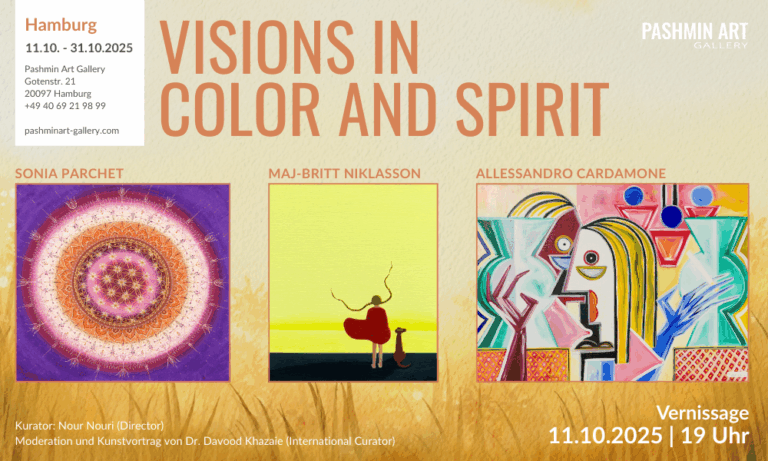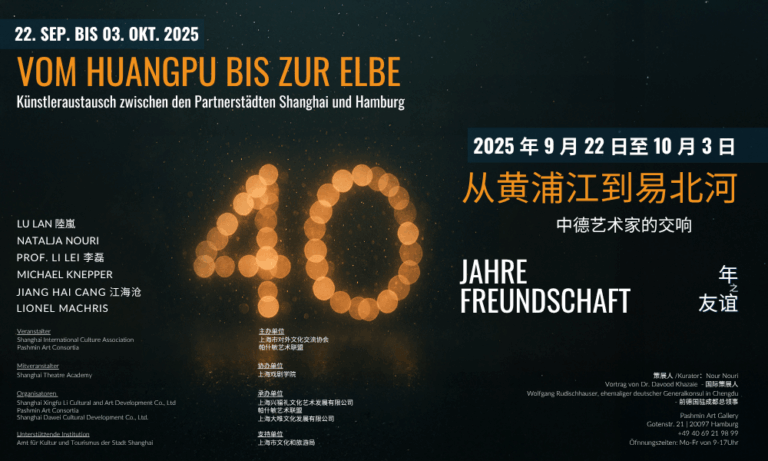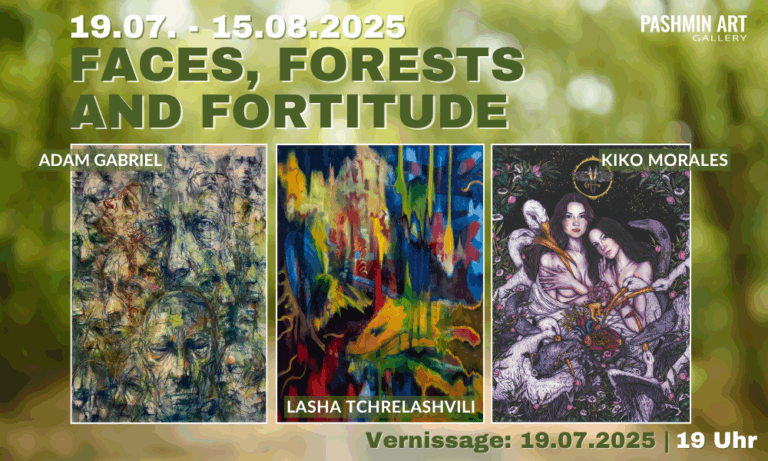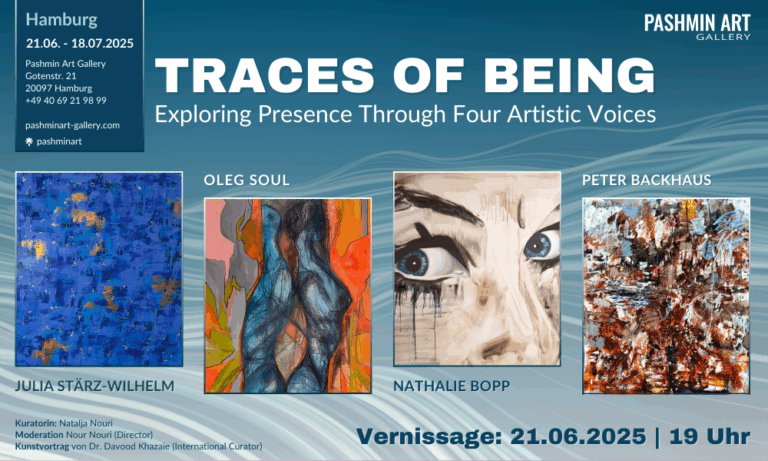A SWISS PIONEER OF IMPRESSIONISM
Julius Voegtli was born on March 29, 1879 in Malters, central Switzerland, the son of a country doctor. He began to paint and draw as a teenager. In secondary school, he learned decorative painting before taking classes at the Gewerbeschule in Basel. Voegtli received more formal training at the Academy of Fine Arts in Munich, where he enrolled in 1902. At the Academy, he studied under the famous German landscape and genre painter Karl Raupp (1837-1918). Raupp’s influence can be seen in Voegtli’s early works, as he worked in a style more akin to Realism.
Vernissage : 12.11.2022 – 7.00 PM
Duration: 12.11. – 17.12.2022
Greeting: Nour Nouri (Direktor von Pashmin Art)
Opening : Dr. Peter Schütt (Author and Art Historian) GER / Dr. Davood Khazaie (internationaler Curator) EN
JULIUS VOEGTLI
However, the artist soon broke away from this traditional influence and turned to a new style that incorporated elements of modern art movements such as Impressionism, Post-Impressionism, Fauvism, and Expressionism, which originated in France and Germany and whose ideas spread throughout Europe. The Academy was also a center for a new generation of artists who would later become leaders in modern art, encouraged by progressive teachers such as Franz von Stuck (1863-1928). Graduates of the Academy in Voegtli’s day included modern visionaries such as Wassily Kandinsky (1866-1944), Giorgio de Chirico (1888-1978), Paul Klee (1879-1940), and Franz Marc (1880-1916).
The influences of these contemporaries and the dynamic environment in which they were trained are particularly pronounced in Voegtli’s use of bright, bold colors and his quick, free brushwork. Despite his considerable creative output, Voegtli made his living primarily as a decorative painter, receiving commissions for frescoes on public buildings; eventually he became co-owner of a painting business. He was also involved in local politics in the city of Biel and held several offices in the field of infrastructure and urban planning.
Despite his dedicated involvement in local politics, the artist continued to paint, draw and write in his later years. Voegtli was even exhibited during his lifetime: in 1931, the Benador Gallery in Switzerland held an exhibition of about a hundred of the artist’s works. A review in the local Express newspaper praised the works and highlighted the artist’s obvious mastery of the watercolor medium. The reviewer praised Voegtli’s inventive use of color and his ability to capture different tones within a single hue, as well as his skill in depicting bright light and deep shadows.
To date, Pashmin Art Consortia has organized and held four major exhibitions in China and Europe: At the Dounan Art Museum in Kunming (2017/2018), the Hong Art Museum in Chongqing (2020 and 2022), and the Mark Rothko Art Museum (2018). Other major exhibitions are planned for 2023 at the Archive Art Museum Beijing and other prestigious museums in Europe.
The artistic legacy is owned by private collectors, including some works on view at Museum Schwab and the NMB Neues Museum Biel in Switzerland.
In 2022, Pashmin Art Publisher has published a comprehensive book (540 pages) on the life’s work of Julius Voegtli in three languages, German, English and Chinese, in three separate volumes.
We cordially invite you to the solo exhibition, book presentation and book signing with the grandson, Hans Vögtli!


